Track Categories
The track category is the heading under which your abstract will be reviewed and later published in the conference printed matters if accepted. During the submission process, you will be asked to select one track category for your abstract.
Utilitarian Genomics has been built up to examine the structure and capacity of atomic genome in higher plants. The improvement and utilize biotechnology and genomic instruments in financially vital plant species, for example, timberland and natural product species, grains, vegetables and therapeutic plants. Actual activities are harmonized to explore genomic tools, meant for sample, sequencing, transcriptomics, proteomics, and atomic markers, to differentiate supervisors, potentials and structures in regulator of protection from vermin, ailments and for resilience to water shortfall, saltiness and temperature push. Stranded by functioning, normal interaction and biotechnology campaigns, we recognize new plant items, enhance biomass creation, and furthermore bolster reproducing programs. The investigation of bioactive mixes and potential wellbeing valuable impacts of sustenance metabolites is additionally performed.

- Track 1-1Cereal Genomics
- Track 1-2Plant Science Meeting
- Track 1-3Plant genomics scope in Europe
- Track 1-4Micro propagation in Plants
- Track 1-5Plant Tissue Culture and Biotechnology
- Track 1-6Sequencing
- Track 1-7Transcriptomics
- Track 1-8Proteomics
- Track 1-9Molecular marker development / Marker assisted selection
- Track 1-10Drought Tolerance and Frost Tolerance
- Track 1-11Heat Tolerance
- Track 1-12Hybrid wheat and Phenotyping
- Track 1-13Plant Science Meeting, Paris, Plant Biology Conferences
- Track 1-14Plant Transformation
- Track 1-15Salinity Tolerance
- Track 1-16Structural Biology
- Track 1-17Plant Genomic Case Studies
Current nocturnal method in genome scheming receipts complete the conceivable towards surely regulate DNA activities in plant cells, providing predominantly manufactured plants through features of intrigue. Superiority concentrating on expertise goes on the transmission approach intended for both sequence nucleases and repair formats, to plant cells.

- Track 2-1Improving gene editing technology, enzymes, and methods
- Track 2-2Genome editing applications using new techniques
- Track 2-3Genome editing and the latest EU policies
- Track 2-4Genome / DNA assembly for editing
- Track 2-5Plant Genetic Engineering and GM crops
- Track 2-6Plant Gene Editing for the Consumer
- Track 2-7Plant Genomics its Applications in Cerals
- Track 2-8Plant Genome Engineering and Plant genetic diversity
- Track 2-9Plant Biology Conferences
Plants developed stage by arrange talented hereditary and epigenetic administrative foundations to react quickly to frightful natural circumstances, for instance, warm, cold, drought, and pathogen illnesses. Precisely warm to a great degree impacts plant development and upgrade, unwelcoming quality and every day temperament, and implies an unaffected risk to the all-inclusive sustenance source. Transgenes radiate an impression of being particularly fragile to epigenetic assortment which can provoke transgene quieting, i.e. the whole or deficient inactivation of transgene verbalization. Plants are ideal model structures to consider the effect of changing normal conditions on epigenetic outlines. We are especially captivated to perceive how certain genomic areas push toward getting to be centers for epigenetic alteration and how normal weight impacts epigenetic quality control. Our associated work investigates how transgene calming can be balanced and how epigenetic assortment can be manhandled for novel raising strategies.
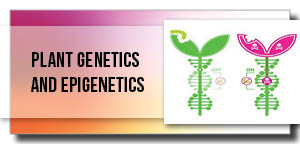
- Track 3-1miRNA and RNA analysis
- Track 3-2Genetic conferences
- Track 3-3Plant breeding methods
- Track 3-4Pathogen detection and analysis
- Track 3-5Epigenetics and DNA methylation studies
- Track 3-6Disease and stress resistance
The innovation in agricultural genomics will continue its contribution in sustainable productivity and offers solution to challenges in facing global population. Functional genomics in the field of agriculture helps us to understand the relationship between phenotype and genotype of plants in global scale. The increase of investment in agriculture is mainly due to the use of nitrogen fertilizer because it directly affects yield as a large amount of nitrogen is being wasted up and not absorbed by the plants. Improving efficiency of nitrogen usage by genetic improvement is necessary for the agriculturaldevelopment. Agricultural genomics involves various types of breeding techniques like Marker-Assisted breeding, Conventional Breeding etc. to improve the yield of crops.
Cereals or crops belongs to monocot family and are cultivated globally as they provide huge amount of energy, therefore it is known as staple crops. Development and use of all kinds of molecular markers use and construction of molecular maps, study of population genetics and domestication of cereals using tools of genomics research. The gene expression databases play a vital role in extracting, organizing and interpreting information and build a connection between the genotype and phenotype of plants.
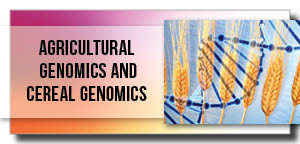
- Track 4-1Agricultural Meteorology
- Track 4-2Seasons and Systems of Farming
- Track 4-3Irrigation and Water Management
- Track 4-4Harvesting and Post-harvest Technology
- Track 4-5Agronomy of Field Crops and Biofuel Plants
Plant reproduction is the exploration of augmenting constructive hereditary qualities in plants that individuals develop. It comprises of diagnostic systems that enable specialists to make and select plants that are reliably exceptional in wanted characteristics. The prime goal in plant replicating is to expand the transmissible foundation of professional edit classes to obey towards fluctuating requirements on yield and excellence. Dimensions accepts a significant portion in current day plant replicating. A traditional quantitative hereditary model composes the phenotype because of hereditary, natural and genotype by condition association impacts. In the genomic period, this recognized model consumes remained increased and summed up. Straight merged copies supposed an imperative part in traditional quantitative hereditary qualities and still do as such in present day.
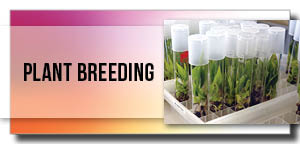
- Track 5-1Plant Molecular Assisted Breeding
- Track 5-2Marker Development
- Track 5-3Dubai Plant Science congress
- Track 5-4Genetic Modification
- Track 5-5Mutagenesis in Plant Breeding
- Track 5-6Mapping of Genes
- Track 5-7Polyploidy in Plant Breeding
- Track 5-8Signal Transduction
- Track 5-9Signal Transduction
- Track 5-10QTL Analysis
Plant Nutritious Genomics recoils a summary of plant appropriate genomics, which remains categorized as the relationship between a plant's genome and its motivating possessions. The astute assurance and rising of varieties of items will accept a gigantic part in meeting these objectives, and advances in plant healthy genomics will allow the greatest limit of yield decision and repeating systems to be made sense of it. Understanding plant sustenance and applying this learning is critical to growing product age to meet creating demands for sustenance. Genotypic approaches, in perspective of collect assurance and recreating have starting late benefit by mechanical advances, including the satisfaction of plant genome sequencing wanders.
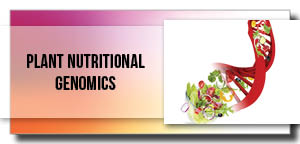
- Track 6-1Green nanotechnology
- Track 6-2Agriculture Nano toxicology
- Track 6-3Uptake and Translocation of Nanoparticles in plants
- Track 6-4Effects of Nanoparticles on plant growth and development
- Track 6-5Transgenic plants producing vaccines
- Track 6-6Vaccines given to plants for a healthy vegetation
Plant signaling is the capacity of plants to detect and react to the earth to change their morphology, physiology and phenotype in like manner. Different subdivisions, for example, plant physiology, nature and atomic science are used to examine the capacities of the plant. Plants respond to chemicals, gravity, light, dampness, contaminations, temperature, oxygen and carbon dioxide focuses, parasite pervasion, malady, physical disturbance, sound and touch.
Many chemicals are critical for plant growth and development and in integrating various stress signals and controlling downstream stress responses by modulating gene expression machinery and regulating various pumps and biochemical reactions. Plant hormones are responsible for chemical signaling in plants. Auxin is the hormone responsible for phototropism in plants. The drought signaling in plants is done by Abscisic acid during the time when there is stress on water availability. Calcium signaling is one of the very important intracellular second messenger molecules involved in many signal transduction pathways in plants. Nitric Oxide signaling is also an important chemical signaling adopted by plants for efficient utilization of Nitrogen from the soil.
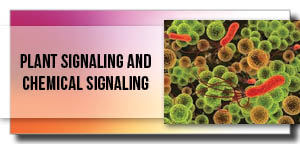
- Track 7-1Energy Conversion and Metabolic Regulation in Chloroplasts
- Track 7-2Bio-energy Conversion
- Track 7-3Signal Transduction in Plants
- Track 7-4Dissecting Mechanism in Crop Plants
Genome Sequencing is the way toward deciding the total DNA grouping of a living being's genome at a solitary time. This involves sequencing the greater part of a living being's chromosomal DNA and in addition DNA contained in the mitochondria and, for plants, in the chloroplast. It is essentially making sense of the request of DNA nucleotides, or bases, in a genome the request of As, Cs, Gs, and Ts that make up a living being's DNA. Plant Genomics experts take prompt grasped new intentions, developments and ways to agreement through produce genome, transcriptomic and epigenomedatasets for typical and produce types that consume acceptable profound inferences into plant science. At the point when an animal groups' reference genome is accessible, entire genome resequencing is a proficient approach for finding qualities, SNPs, and basic variations, while at the same time deciding genotypes. Information after these investigations will plug in the holes that happen in the hereditary maps of frequent plant species, enhancing plant repeating and optimal, and allowing authoritative absolute genomic researches inside and slanting over species and couple of associations integrates.
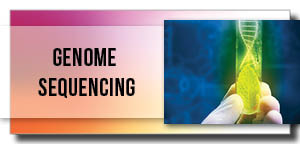
- Track 8-1Protein Engineering
- Track 8-2Single nucleotide polymorphisms
- Track 8-3Drug Development and design
- Track 8-4Next-Gene Sequencing
- Track 8-5Nutrition Improvement
The science that arrangements with the investigation of infections of plants, their improvement and control are called Plant Pathology. Plant Pathology is categorized as the examination of the lifetime procedures and environmental circumstances that cause infection in plants, the arrangements comprehensive which this materializes, the influences between these causal specialists and the plant (impacts on plant development, yield and quality), and the techniques for overseeing or controlling plant sickness. Plant infections are caused by biotic specialists like organisms, microorganisms, actinomycetes, Mycoplasma, infections, nematodes, and blooming parasites or by abiotic like troublesome ecological conditions or nourishing inadequacies. Investigation of plant pathology includes the study of Microbiology, Mycology, Nematology, protozoology, phycology, environmental mechanisms.
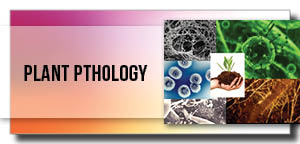
- Track 9-1Insect Plant Interactions
- Track 9-2Microbial Genomics
- Track 9-3Plant Environment Interaction
- Track 9-4Fungal Plant Interaction
- Track 9-5Plant Immune Response
- Track 9-6Plant Science
Crop Improvement involves in the engineering of plants done for the benefit of humanity. It can be achieved by three steps- Selection, Isolation and Breeding. By selecting and isolating plants for cultivation, the early farmers were influencing which plants would cross-pollinate. Breeding was done in such a way that two plants are selected, and they are crossed to produce offspring having the desired traits of both parents. Gene editing is the insertion, deletion or replacement of DNA at a specific site in the genome of an organism or cell which can be done with the help of molecular scissors. Genetically Modified crops have been developed to resist abiotic stresses, such as extreme temperature, drought or salinity, and biotic stresses, such as pathogens, insects etc. and to increase the crop yield.
Plant Hormones are chemical messengers that are made in one place in the plant body and deliver their message in a totally different place in the plant body. There are many hormones such as Auxin, Gibberellin, Cytokinin, Ethylene and Abscisic Acid by which each hormone is responsible for each function in plants. The drought signaling in plants is done by Abscisic acid during the time when there is stress on water availability. These hormones found only in small concentration but plays a vital role in plant growth, metabolism, aging etc. and study of these hormones are necessary to know well about plants.
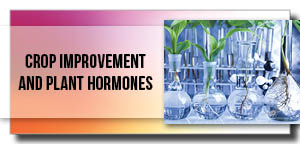
- Track 10-1Plants affecting the soil
- Track 10-2Plant and Micro biome
- Track 10-3Nutrient uptake and plant growth
Plant Science is placed around the genetic and cell switch of plant expansion and enhancement in establish classes, crops and their wild relations employing genomics, proteomics, backgrounds science and boosted bright microscopy. Plant Science concentration is projected to give replacements an understanding of in what way plants effort, climbing at the atom to the biological system and how this capacity supports the execution of plants in characteristic and farming environments. Plant Science is a significant focal point of reasonable research undertaking at ANU, distribution over all from the dimensions, vitality, associations, and hereditary qualities and demonstrating of plants and their surroundings. In this specializations understudy are presented to bleeding edge disciplinary research and analysts, which fabricates commitment, comprehension and examination of ebb and flow issues in plant science. The specialization will help understudies trying to seek after expert and graduate degrees in plant sciences and will give a strong foundation to understudies seeking after vocation objectives in plant research center science, and open and natural strategy.
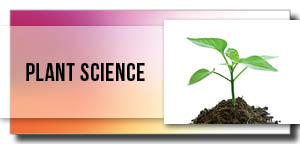
- Track 11-1Medicinal and Aromatic Plant Sciences
- Track 11-2Biotechnology meetings
- Track 11-3Soil Science and Soil-Plant Nutrition
- Track 11-4Agricultural Science
- Track 11-5Plant Morphology and Plant Metabolism
- Track 11-6Plant Physiology and Biochemistry
Horticulture Sciences is the branch of agriculture that deals with the art, science, technology, and business of vegetable garden plant growing. Horticulture is the science and art of producing, improving, marketing, and using fruits, vegetables, flowers, and ornamental plants. It differs from botany and other plant sciences in that horticulture incorporates both science and aesthetics.
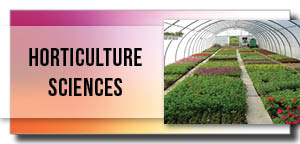
- Track 12-1Floriculture Management
- Track 12-2Greenhouse Management
- Track 12-3Plant Nursery Operations
- Track 12-4Ornamental Horticulture
- Track 12-5Turf Management
Plant Proteomics is worried about the whole supplement of proteins of plants including the changes made to an arrangement of proteins. Proteomics is a top to bottom investigation of a proteome, including data on protein and its adjustments and varieties. Proteomics works with the cooperating accomplices and individuals related with it in a consecutive system. Plant Proteomics features the quick advance in this field in plants, with accentuation on late work in demonstrate plant species, subcellular organelles, and parts of the vegetation cycle, for example, flagging, multiplication and stress physiology.

- Track 13-1Omics Data integration
- Track 13-2Plant Interaction with Environment
- Track 13-3Quantitative Proteomics
- Track 13-4Plant Development
The plant co-articulation is alternative web-based catalogue used for plant superiority investigation A common co-communicated class can generate frequent activities of co-articulation material that hold numerous potentials of enthusiasm for improvement investigation. Likewise, co-communicated qualities can be distinguished and inventoried as far as near genomics by utilizing the 'Co-articulation quality analyze' highlight. This examination will help translate exploratory information and decide if there is a typical term to those qualities.

- Track 14-1Bioinformatics analysis and challenges
- Track 14-2Use of genomic data for candidate genes
- Track 14-3Identifying novel functional genes
- Track 14-4Application of bioinformatics software for DNA / RNA analysis
- Track 14-5Computational systems for Modelling and visualization of information
- Track 14-6Cloud computing and storage solutions
- Track 14-7Molecular biology meetings
- Track 14-8Industry applications of the latest genomic technologies
- Track 14-9Collaborations and how they can drive plant research
- Track 14-10Insight into regulatory challenges
A Genetically Modified Organism is a plant, creature, microorganism or other life form whose hereditary cosmetics has been adjusted utilizing recombinant DNA techniques (likewise called quality grafting), quality change or transgenic innovation. This temperately novel science makes unpredictable mergers of plant, creature, bacterial and viral potentials that don't occur in landscape or through predictable hybridizing procedures. GMO is any living being whose hereditary material has been changed utilizing hereditary designing systems (i.e., a hereditarily built living being). GMOs remain employed to distribute frequent drugs and genetically altered sustenance’s and is commonly applied as a portion of reasonable investigation and the formation of dissimilar crops.

- Track 15-1Genetically Modified Food
- Track 15-2Genetically Modified Crop
- Track 15-3Plant Science
- Track 15-4GMO and Environment Interaction
- Track 15-5Genetic Engineering
- Track 15-6Transgenic Plants
- Track 15-7Mapping of Genes
Atomic rearing is the utilization of sub-atomicscience devices, regularly in plant reproducing and creature reproducing. Atomic rearing might be characterized in a wide sense as the utilization of hereditary control performed at DNA sub-atomic levels to enhance characters of enthusiasm for plants and creatures, including hereditary designing or quality control, sub-atomic marker-helped determination, genomic choice, and so forth. This term is utilized to depict a few present days rearing procedures, including marker-helped choice (MAS), marker-helped backcrossing (MABC), marker-helped intermittent determination (MARS), and vast choice (GWS) or genomic choice (GS). Plant mutagenesis is quickly transitioning in the outcome of ongoing improvements in high-determination sub-atomic and biochemical methods. By combining the high variability of mutagenized populations with original screening procedures, potentials that are moderately tough to differentiate by normal background are currently existence twisted and described at the atomic level.
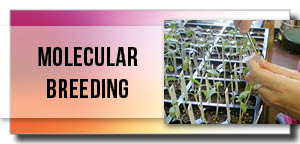
- Track 16-1Molecular Marker
- Track 16-2Mutagenesis in Plant Breeding
- Track 16-3Polyploidy in Plant Breeding
- Track 16-4Molecular marker development / Marker assisted selection
Plant manufactured science is a developing field that consolidates building standards with plant science toward the outline and creation of new gadgets. This rising field should assume an essential part in future farming for conventional harvest change, yet additionally in empowering novel bio creation in plants. Comment is the way toward recognizing and portraying the areas of natural enthusiasm inside a genome. The area and structure of protein-coding qualities is the most widely recognized type of comment, however different sorts of critical succession explanation incorporate the distinguishing proof of noncoding RNAs (tRNAs, rRNAs, snoRNAs, miRNAs, siRNAs), tedious groupings, for example, transposable components, and the area of hereditary markers. Utilitarian explanation depicts the organic setting of quality arrangements. All genome explanation is performed utilizing semi-computerized computational pipelines and is liable to some level of understanding and mistake. In this manner, specialists must comprehend the techniques used to make explanation with a specific end goal to evaluate the nature of that comment.
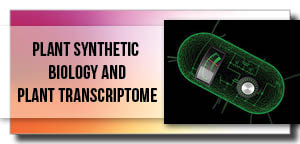
- Track 17-1Plant Genome Annotation
- Track 17-2Plant Gene Family Database
- Track 17-3Plant Synthetic Biology
The agronomic use of nanotechnology in plants (Phyto-nanotechnology) can probably regulate normal plant generation backgrounds, taking into interpretation the skillful onset of agrochemicals (e.g., composts, pesticides, and herbicides) and target-particular transference of biomolecules (e.g., nucleotides, proteins, and activators). An improved understanding of the networks among nanoparticles (NPs) and plant reactions, including their take-up, limitation, and action, could alter edit creation through expanded malady opposition, supplement use, and harvest yield. Nano agribusiness includes the work of Nano particles in farming these particles will give some valuable impacts to crops.
The rise of nanotechnology and the improvement of new Nano gadgets and Nanomaterial are open potential novel applications in horticulture and biotechnology. Nanoparticles are resources that are adequately diminutive to fall intimate the Nano metric variety, by not any a smaller amount than one of their dimensions existence not as much as a couple of hundred nanometers. These materials would discharge pesticides or manures at a time and focused on area. Nanoparticles categorized to agrochemicals or dissimilar materials might moderate the destruction toward added plant tissuesand the number of artificial complexes settled into nature.
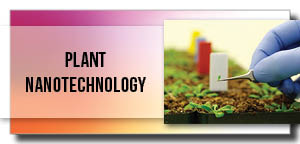
- Track 18-1Green Nanotechnology
- Track 18-2Plant Nano toxicology
- Track 18-3Agriculture Nanotechnology
- Track 18-4Uptake and Translocation of Nanoparticles in plants
- Track 18-5Effects of Nanoparticles on plant growth and development
Plant tissue culture is the strategy of developing and keeping up plant cells, tissues or organs particularly on simulated medium in appropriate holders under controlled ecological conditions. Any piece of a plant is taken out which is known as explant and developed in a test tube under sterile conditions.
Cell division from explant frames callus which can be developed into another new plant. Plantlets can be recovered by tissue refined which includes different strategies, for example, immunization, hatching, recovery and solidifying. Transgenic plants can likewise be built by tissue refined methods. Micro propagation is an incorporated procedure which likewise includes in recovery of plants by different techniques, for example, Multiplication by Adventitious Shoots, Axillary Buds and Apical Shoots, Multiplication Through Callus Culture, Organogenesis and Somatic Embryogenesis.

- Track 19-1Micro propagation in plants
- Track 19-2Applications of Plant Tissue Culture
- Track 19-3Callus and suspension Culture
- Track 19-4Embryo Culture
- Track 19-5Regeneration of Plantlets
- Track 19-6Somatic Hybridization
- Track 19-7Resistance to weedicides
Plant metabolism is defined as the complex of chemical and physical events of respiration, photosynthesis, and the synthesis and degradation of organic compounds. These metabolic pathways allow the organism to perform all the normal life processes such as growth and maintenance of cell structures, repair damage, reproduction and respond to environment. The enzymatic activity of plants is controlled by allosteric sites by which modulator or effectors binds to it. Biosynthesis of enzyme protein is done by translation and translocation level. Crassulacean (CAM) is a carbon fixation pathway exists in succulents such as cacti and other desert plants as an adaptation to arid conditions.

- Track 20-1Plastid Metabolite Transporters
- Track 20-2Photosynthesis
- Track 20-3Light Reactions
- Track 20-4Oxidation-Reduction Reactions
Arabidopsis is a variety in the family Brassicaceae. They are little blooming plants identified with cabbage and mustard. This variety is of incredible enthusiasm since it contains thali cress (Arabidopsis thaliana), one of the model living beings utilized for examining plant science and the primary plant to have its whole genome sequenced. Changes in thali cress are effortlessly watched, making it an exceptionally helpful model.

- Track 21-1Genetic Engineering of Arabidopsis
- Track 21-2Cytogenetic of Arabidopsis
Genomes have evolved in nature and all populations in the past as well as in modern times have been evolving. There are many ways of origin of species in nature and the parental genome is improved and altered. Some of these natural mechanisms include genetic mutations, polyploidy, particularly allopolyploidy (natural hybridizations), chromosomal aberrations and related many inherent molecular mechanisms operative within individual(s). Many of these events have sometimes resulted in “genomic reshuffle” causing expressions of those DNA sequences which were once present in the distant past geological history (millions of years ago). Several such examples are prevalent among plants and animals. Additionally, evolutionary mechanisms have evolved such organisms which are either connecting links between groups and or are unique amalgamated genomes such as Platypus among animals. In the past few decades, some rare plants have shown the presence of a few DNA stretches matching the DNA sequences on the human chromosomes. Papers dealing with any of these themes will be welcome for this session

- Track 22-1Next Generation Sequencing
- Track 22-2Divergence Hitchhiking
- Track 22-3Genome Hitchhiking
- Track 22-4Gene Flow
- Track 22-5Genome Scan
- Track 22-6Reproductive Isolation
- Track 22-7Speciation Genomics
- Track 22-8Gene Expression
Modern DNA technological approaches have progressed in such a way that we have been able to find homology among organisms and trace for evolutionary mechanisms even for a fate of a few nucleotides and also estimate the path and time of evolutionary diversions among various organisms. Not only from anthropological point of view, but also from homology of DNA sequences we have proved that Homo sapiens arose after hybridization in between two species of Homo. Furthermore, detailed investigations on DNA isolated from the fossil bones (fossilized bone marrow) biologists and biochemists have established modes of origin of Neanderthal and other Homo species including Homo sapiens. Among plants, DNA samples obtained from many fern genera and also among grasses, evolutionary biologists have offered new pathways for the emergence of new and related genera and species. Papers dealing with the fossil group and intimately related extant genera or species would be welcome for this session
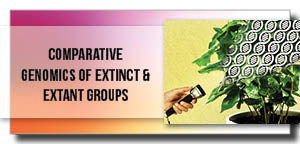
- Track 23-1Molecular Evolution
- Track 23-2Genome Evolution
- Track 23-3Genetic Divergence
- Track 23-4Genome Duplication